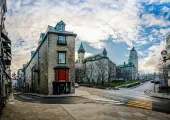When in Rome, Take A Trip to the Middle Ages
Catalogue
- Visit the World Famous Colosseum
- Get A Sense of Europe’s "Old Summer Palace" with the RomAn Forum
- The Palatine Hill: Birthplace of the Legendary Roman Brothers
- Caracalla Baths: The Romans Loved to Bathe
- Constantine's Arch: the Prototype for Paris’s Arc De Triomphe
- Trajan Forum: Rome’s Last Forum
- Castel Sant'Angelo: Hadrian’s Mausoleum
Show More
As the birthplace of the ancient Roman Empire, the Rome of today is like an open-air museum with lots of monuments and traces of antiquity. When you come here, you don't need to enter a museum to see all kinds of important and interesting cultural relics, just stroll about at random and you’ll get your fill!
The world-famous ruins of the Colosseum are located at the center of urban Rome. In the ancient Roman Empire, this place was the dedicated entertainment venue of nobles, slave owners and free people to watch battles between slaves and wild animals. As a symbol of ancient Roman civilization, it used to be said that "wherever the Colosseum is, there too is Rome; should the Colosseum ever collapse, then Rome will perish; once Rome is extinct, then the world will perish." It is recommended to visit the interior of the Colosseum during daylight hours and to check out the exterior landscape after 7pm, when it is beautifully illuminated! The interior of the Colosseum is very impressive. It was designed to accommodate a crowd of 50,000 spectators at one time. Take a good long look at the interior design. There are three concentric rings of seating areas of differing heights, each level of which has 80 entrances. Beneath the Colosseum, there are many underground levels, and even a water source which could be used to flood the arena for the reenactment of naval battles.
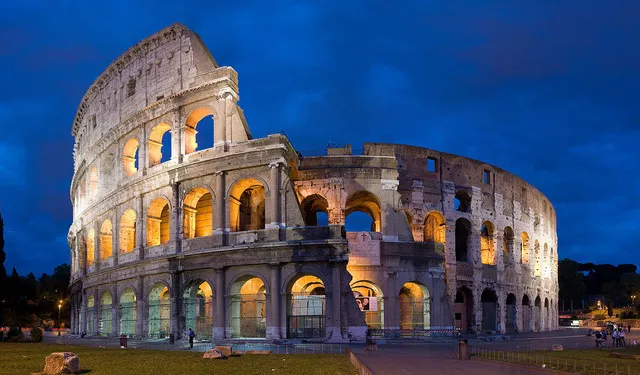
Located between the Colosseum and Piazza Venezia, the Roman Forum (Foro Romano) was the very center of the ancient Roman Empire. This is the largest of the ancient Roman ruins to have been discovered. It is like visiting Rome’s "Old Summer Palace." Open daily until one hour before sunset, it is highly recommended to visit late in the day, both for protection from sunburn and to get the best light from which to see the ruins and really appreciate their historic character! This place was Rome’s nerve center: it was where the Senate met, where the Citizens' Congress debated, where the great temples stood proud, where the sacred roads of black basalt lay, and where the Imperial Treasury was stored. These stones bore witness to many momentous moments in history, from the speech of the Emperor Augustus to the stabbing of Caesar. The most important building in the square is the Arch of Titus; it is one of the three masterpieces of classical relief art and is considered to be a national treasure.
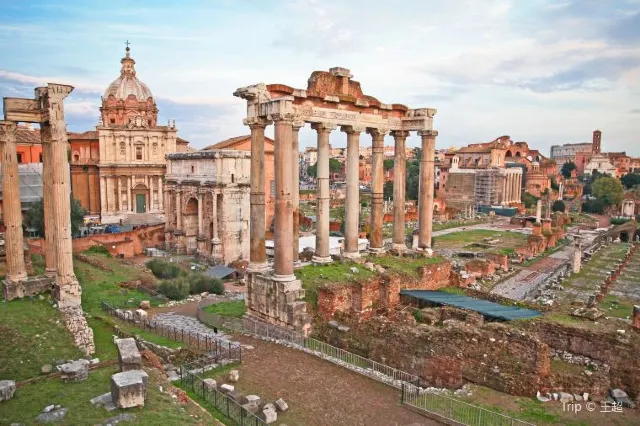
On the southwest side of the Colosseum is the mountain considered to be the birthplace of Rome as the two brothers (Romulus and Remus) who are said to have created the ancient Roman city were born here. Rome is known as the "City of the Seven Hills." Of these seven hills, the Palatine is the highest. A garden in the northwest corner of the hill, Orti Farnesiani, is a good place from which to overlook the Roman "Old Summer Palace." Today, most of it is covered by the ruins left behind by ancient Roman emperors (the Flavian Palace and the House of Augustus). It is highly recommended to rent an audio guide at the entrance; although most of the remains are broken ruins, the sunken area where ancient royalty once enjoyed games and events are still identifiable. You can also take a look at the Domus Livia—the best preserved of the ruins—it is similar to the Queen's Palace.
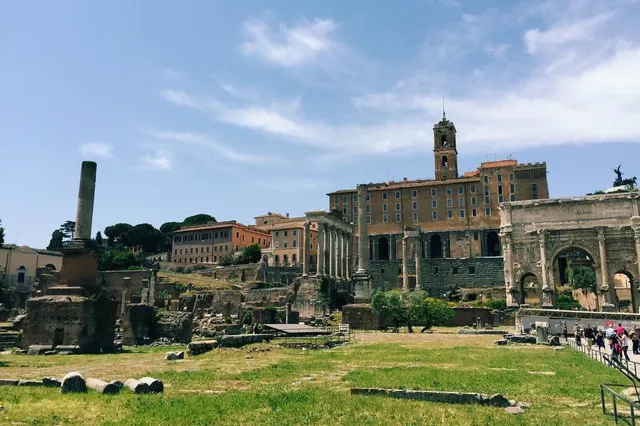
The Terme di Caracalla (Caracalla Baths) were built by the Emperor Caracalla in the year 217. Covering 160,000 square meters, the Baths are comparable to a modern integrated leisure center. In addition to the 2000-person bathing facility, the venue also included two libraries, art galleries and gardens. There was even a shopping mall. The entire building uses geothermal heating and the aqueduct which serves it was still in use until the 19th century. Nowadays, the great open-air lawn is where most of the remains of the public baths can be seen. There is a great vast sense of openness when you visit this place. In addition to the surface ruins, you can also visit the bath's subterranean pipeline system and underground temple. It is said that the ancient Romans loved bathing very much. Everywhere the Romans went, the remains of Roman baths have been found. In the summertime, especially middle to late July, you can see open-air opera performances here.
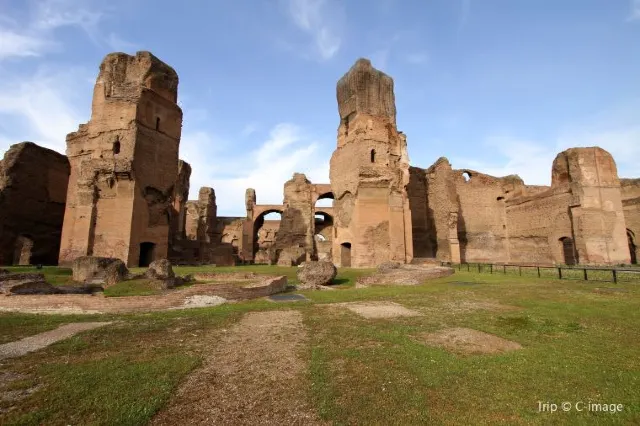
Constantine’s Arch (Arco di Costantino) is located on the west side of the Colosseum. It was built in the year 315 to commemorate Emperor Constantine's defeat of Maxentius and the post civil war reunification of the Roman Empire. This 21-meter-high triumphal arch has three arched gates. The sculptures on it are nothing short of exquisite. When Napoleon came to Rome to see Constantine’s Arch, he liked it so much that he built the Arc de Triomphe in Paris. The eight bas relief sculptures above the minor arches were originally from a monument built in honor of Marcus Aurelius and record scenes from the emperor’s life. Standing on the open space in front of the left side of Constantine’s Arch, the Arch and the Colosseum can be photographed at the same time. In the daytime, there are too many people taking pictures, so it is advisable to go take photos there in the evening, after which you should go to see the illuminated exterior of the Colosseum.

Trajan’s Forum (Foro di Traiano) is located next to Piazza Venezia; built to commemorate Trajan's victorious expedition to Romania, it was the last imperial forum to be built by Rome and is the largest one unearthed in the Royal Plaza. Today, the two huge libraries, two magnificent town halls, and the still-standing Trajan’s Column are some of the most spectacular sights belonging to the Rome of yesteryear. The absolutely must-see attraction here is Trajan’s Column (Colonna Traiana) on the westernmost side of the square. It is a masterpiece of ancient Roman monumental art, commemorating the most remarkable achievements of Emperor Trajan, who was one of the "Five Good Emperors" of Rome. The monument is built from 18 pieces of Greek marble and is like a tightly rolled scroll, carved with 2500 exquisite figures. The carvings tell a story which, from the bottom to the top covers a total length of 200 meters.

The Mausoleum of Emperor Hadrian (the Castel Sant'Angelo) is located on the banks of the River Tiber at the western end of the imperial Roman area; it is close to the Vatican and trips can be arranged to visit both at one time. This is a family cemetery built by the Emperor Hadrian. It was later converted into a fortress by one of the 6th century popes. Currently a museum, it has collections of papal furniture and ancient weapons. The Aelian Bridge or Ponte Sant’Angelo in front of the Castel Sant'Angelo is considered to be the most beautiful bridge on the Tiber River. The highlight of the bridge is the 12 statues of angels, which were carved by the artist Gian Lorenzo Bernini and his disciples. Each statue holds in its hands one of the instruments from the Passion of Christ. Two of the angels (the spear carrier and the one with the vinegar sponge) were designed and carved by Bernini himself, but the originals have since been moved to a museum and the ones on the bridge are replicas.
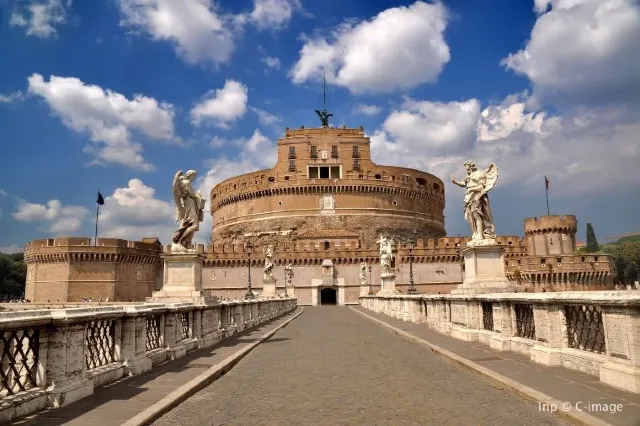
Trending Travelogues
Popular Trip Moments
Popular Travel Types
Popular Attractions
Popular Destinations
Recommended Attractions at Popular Destinations







Site Operator: Trip.com Travel Singapore Pte. Ltd.
